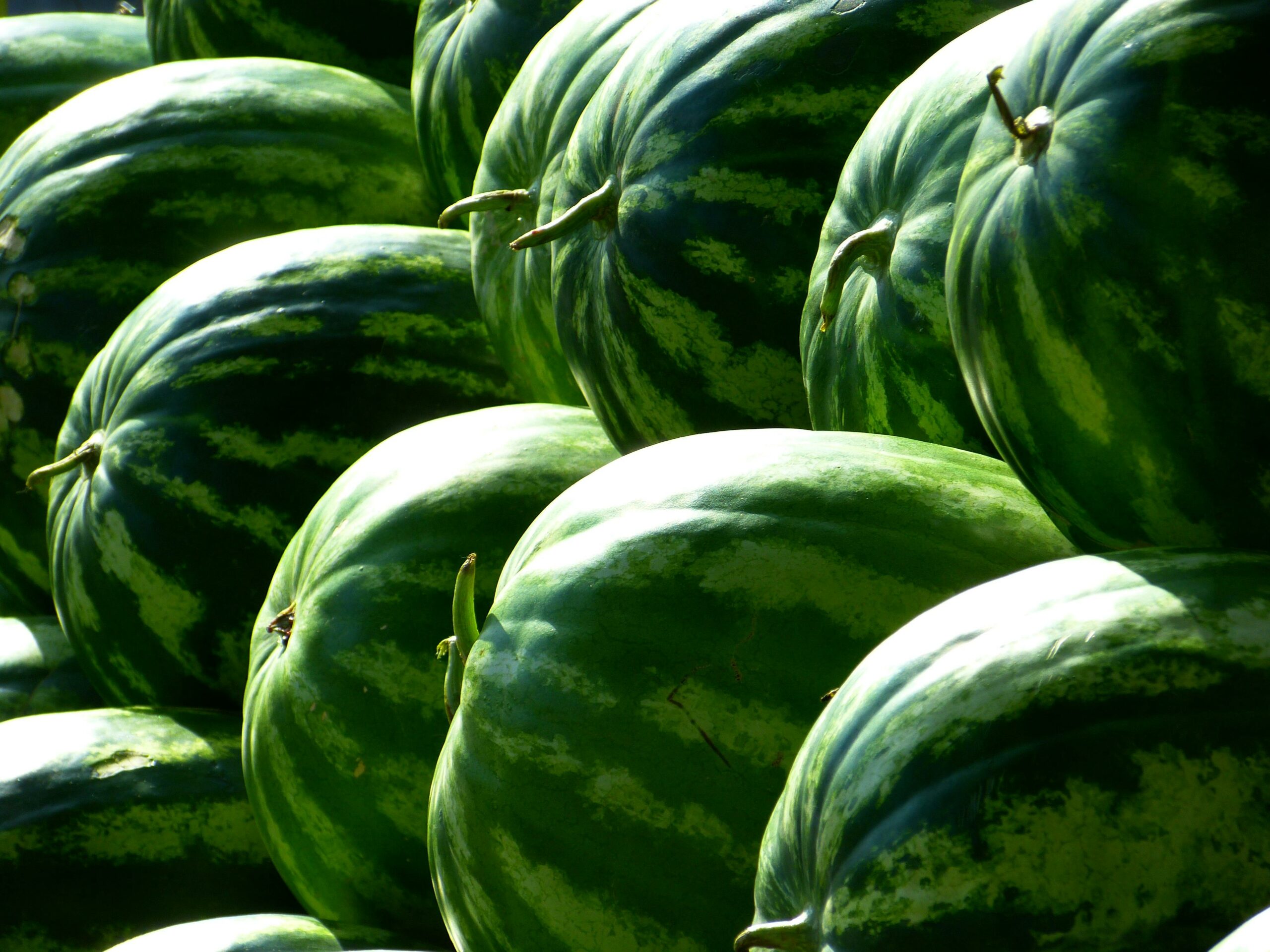Seedless watermelons: Where science and summer sweetness meet

MILAN, Ill. — Summer, for many, it means melon season.
According to the UDSA, in 2022, approximately 21.1 pounds of melon was available per U.S. consumer. Of the melons available and enjoyed by consumers, the three most popular melons ranked, in order of availability: watermelon (14.1 pounds), cantaloupe (5.3 pounds), and honeydew (1.6 pounds).
A brief history of watermelon (Citrullus lanatus)
Not all common names are as spot on as watermelon but this aptly named fruit consists of 92 percent water. The high-water content of Citrullus lanatus fruit was first recognized by the people of ancient Africa and consumed as way to hydrate while inhabiting an arid environment. Evidence suggests that a relative of the modern-day watermelon, although the exact genetics and form of that fruit is unknown, has been enjoyed by indigenous people of the Kalahari Desert region for over 5000 years.
Over time, the watermelon was imported to Egypt. The ancient Egyptians are credited with making improvements to the fruit. The wild type of plant is believed to have had a bitter flesh and a less palatable flavor than the sweeter varieties of today. Seed selection changed the fruit as seeds from the sweeter fruit were planted and those that had a more bitter flavor were left unused. Depictions found in tombs suggest the shape of the fruit elongated to the oblong shape of a watermelon we are familiar with from the spherical shape of the wild type.
Slowly, watermelon made their way around the world. We know this and can track the approximate spread of the fruit because references to it appear in a variety of religious, medical and literary texts. The approximate migration path took watermelon to the Mediterranean region, then Spain, into Europe and then the Americas. As distribution and time advanced, cultivation continued to produce new varieties, flavors, and shapes of watermelon.
Seedless watermelon
Watermelons are synonymous with tiny black seeds perfect for a spitting contest but recent advancements in genetic manipulation have led to the introduction of a seedless watermelon. Watermelon are diploid meaning that when pollinated, pairs of genes split to create viable offspring. In the late 1930s, Japanese plant breeder Professor H. Kihara turned his attention to successfully producing a watermelon that had double the genetics (a tetraploid). Seedless watermelon is the result of crossing one diploid (2x) parent with one tetraploid (4x) parent to produce a triploid (3x) offspring. This odd number of chromosomes means that the offspring are unable to divide evenly during development, resulting in a failure to produce viable offspring (seeds).
While seedless watermelon is desirable by consumers, a few complications for production occur because of these hybridizations. With no viable seeds produced, the process of obtaining seedless watermelon requires growers to grow extra plants that will not produce marketable fruit and more resource dedicated to these plants that will not yield a return on investment. Other options explored by commercial growers includes hand pollinating where labor costs are low and bee pollination in isolation blocks.
Despite production challenges, approximately 90% of the watermelon cultivars grown in the United States for consumption are seedless.
Types of watermelon
Breeding and cultivation programs have created a wide variety of watermelon types.
- Seeded: round, long or oblong-5 to 45 pounds
- Seedless: round to oblong-0 to 25 pounds
- Mini: round, seedless-1 to 7 pounds
- Yellow and Orange: round, seedless and seeded-10 to 30 pounds
Growing Watermelon
Watermelon is a member of the Cucurbitaceae family, the same family of cantaloup, honeydew, cucumbers, squash and pumpkins. Plant seeds after the danger of frost has passed and soils have warmed. Watermelon prefers well-drained soils of sandy-loam, keeping moisture away from developing fruit to minimize disease and rot issues. Roots are relatively deep so plants only require supplemental water during periods of prolonged dryness.
Plants produce vines which require abundant space. Plant hills approximately six feet apart and rows seven feet apart.
Members of the Cucurbitaceae family are monecious, meaning the male and female flowers are distinct from each other but produced on the same plant. If growing watermelon in a limited space, it is useful to know that watermelon is self-fertile meaning the male flowers are capable of pollinating female flowers on the same plant to produce fruit. Pollen grains of watermelon are large, heavy and sticky requiring insect assistance for transfer. Without sufficient pollination, fruit is aborted or misshapen.
New cultivars are available for specialty growers or for fun in the home garden that produces yellow or orange-colored flesh. Seeded and seedless varieties are available in each. Growing conditions and methods are the same as traditional red fruit varieties.
Miss Clipping Out Stories to Save for Later?
Click the Purchase Story button below to order a print of this story. We will print it for you on matte photo paper to keep forever.

